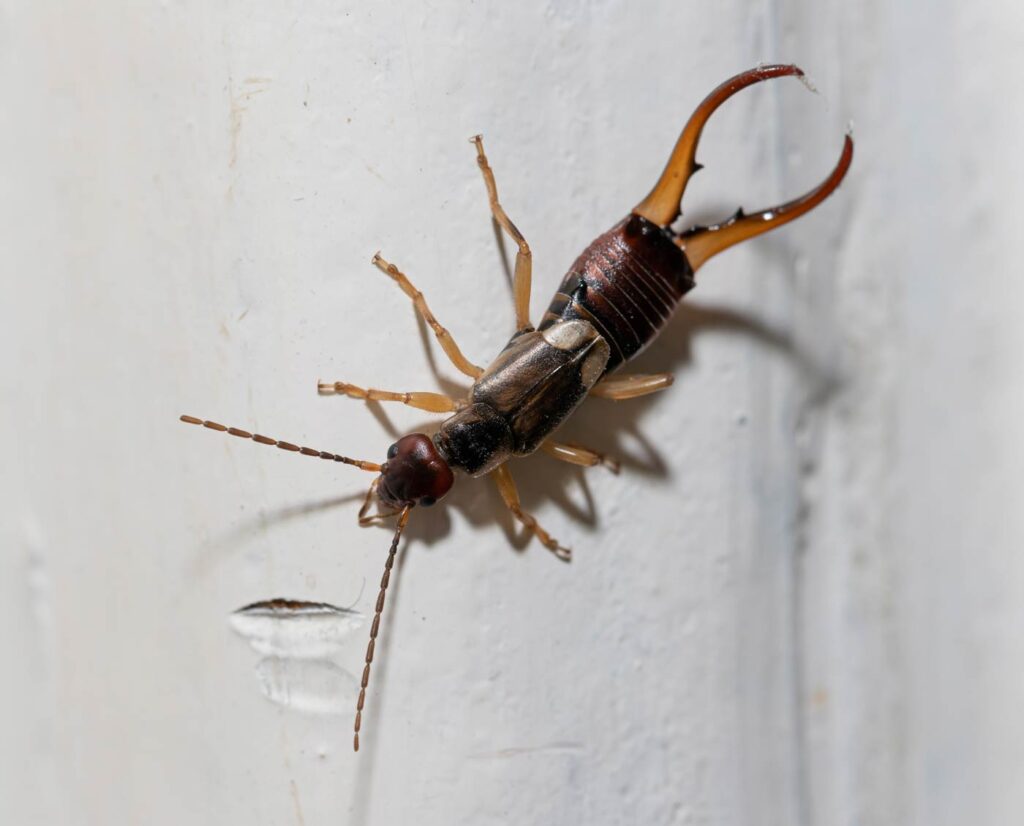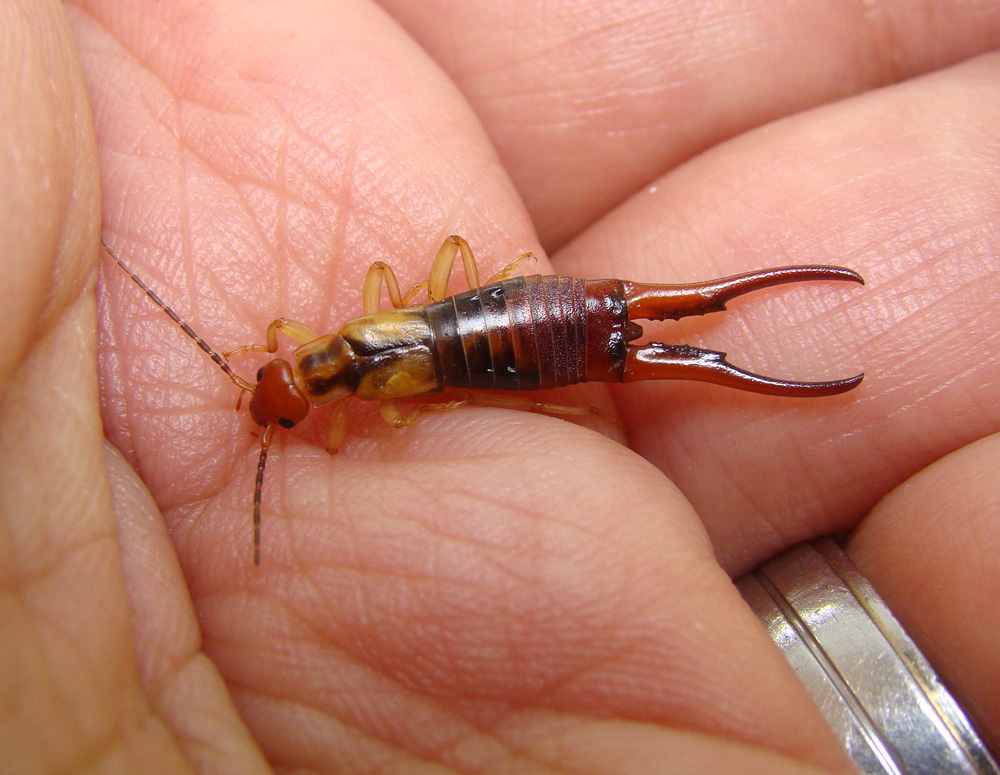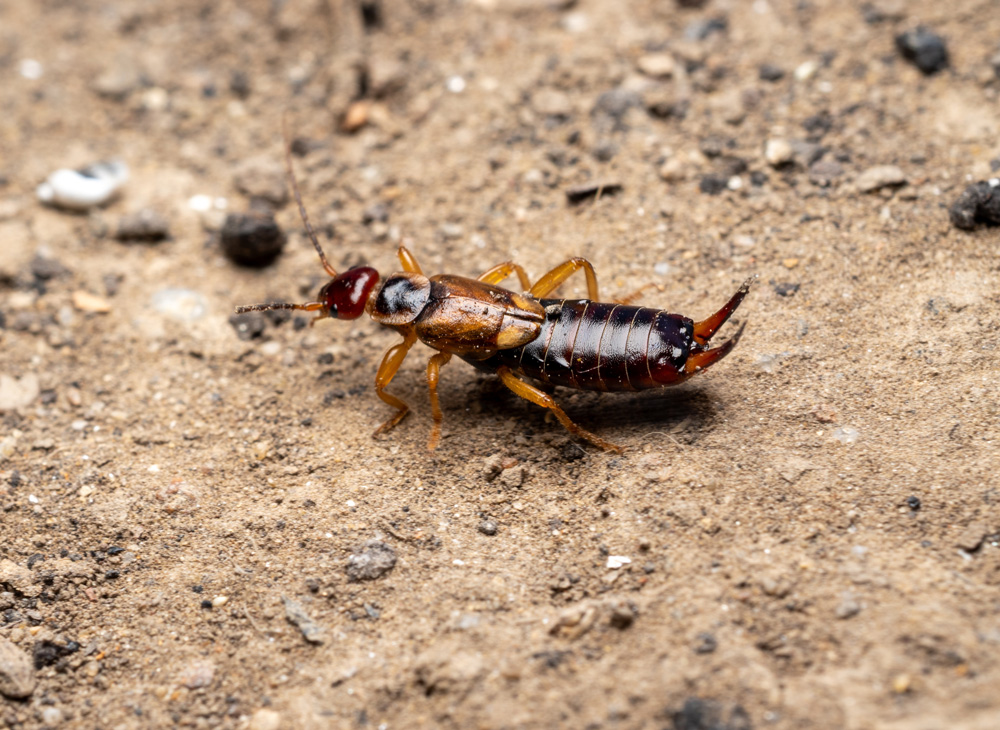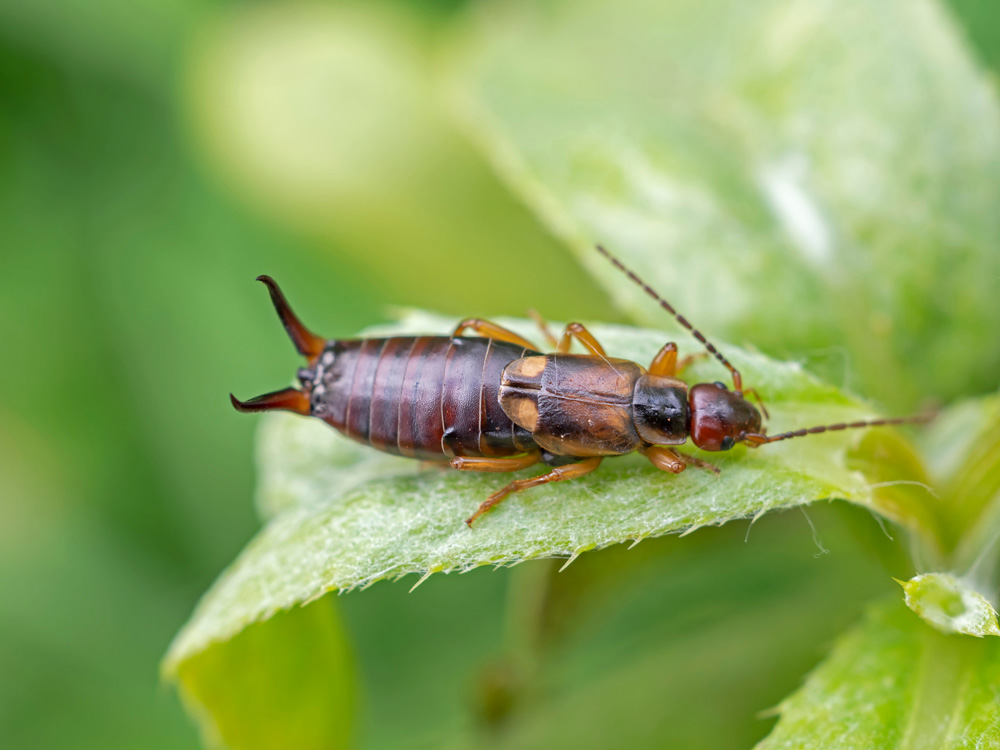Despite their intimidating pincers, earwigs are more of a nuisance than a threat—but when they invade in large numbers, they can quickly disrupt comfort around your home or business. These nocturnal insects thrive in damp, shaded areas and often enter through cracks near foundations or doors, especially during hot or dry weather. Outdoors, they feed on flowers, fruits, and garden plants, while indoors they may appear in basements, bathrooms, or kitchens searching for moisture. Their sudden movements and presence can startle homeowners, and heavy infestations may stain surfaces with droppings or attract other pests that feed on them. At LONESTAR Pest Solutions, we locate moisture-rich hiding spots, seal entry points, and apply targeted treatments to keep your property earwig-free year-round.


The most widespread species in Texas and across the U.S. These insects are nocturnal and often invade bathrooms, kitchens, and basements in search of food and moisture.
Size, Color: About ½–¾ inch long; dark brown with reddish-brown legs and pincers.
Identifying Characteristics: Flattened body with curved forceps-like pincers at the tail end.
Where does it nest/hide? Damp, dark areas—under sinks, in basements, or beneath mulch and stones.
When does it typically reproduce? Spring and early summer; females guard eggs in soil or debris.
What is it attracted to? Moisture, decaying matter, and indoor light at night.

Identifiable by the striped rings on their legs, these earwigs gather in large groups and thrive in damp outdoor areas like mulch beds and gardens.
Size, Color: About ½ inch long; reddish-brown with pale leg bands.
Identifying Characteristics: Noticeable striped legs and curved tail pincers.
Where does it nest/hide? Mulch beds, gardens, leaf piles, and under stones or flowerpots.
When does it typically reproduce? Late spring to summer; eggs laid in moist soil or under debris.
What is it attracted to? Moist, shaded areas rich in organic material.

Introduced from overseas, this species is particularly invasive. They are known for large nighttime activity around lights and can easily slip indoors through small gaps and cracks.
Size, Color: About ¾ inch long; reddish-brown with short wings and long pincers.
Identifying Characteristics: Smooth, elongated body with forceps-like tail appendages.
Where does it nest/hide? Gardens, flower beds, and cracks near foundations or doorways.
When does it typically reproduce? Spring; females lay clusters of eggs in soil and protect them.
What is it attracted to? Lights at night, moisture, and decaying plant matter.
Identify moisture-rich areas around the home where earwigs hide
Check basements, bathrooms, and kitchens for indoor activity
Locate exterior entry points where earwigs are slipping inside
Apply targeted treatments to indoor and outdoor infestation areas
Treat mulch beds, foundations, and other earwig hotspots
Reduce populations in and around structures to prevent invasions
Seal cracks and gaps around doors, windows, and siding
Recommend reducing mulch thickness and removing excess moisture
Schedule follow-up inspections during peak activity seasons
Lorem ipsum dolor sit amet, mea ei viderer probatus consequuntur, sonet vocibus lobortis has ad. Eos erant indoctum an, dictas invidunt est ex, et sea consulatu torquatos. Nostro aperiam petentium eu nam, mel debet urbanitas ad, idque complectitur eu quo. An sea autem dolore dolores.
Cooling weather drives earwigs indoors as they search for warmth. Bathrooms, kitchens, and basements are common hiding places.
Our comprehensive pest inspection and prevention program focuses on early detection and elimination of conditions that attract unwanted pests. Through ongoing monitoring and tailored maintenance, we help ensure a safe, pest-free environment for your facilities year-round.
A proactive rodent management program reduces costly damage, contamination, and emergency callouts often associated with reactive treatments. By addressing potential issues early, LONESTAR Pest Solutions helps protect both your facilities and your budget through consistent, preventive care.
Our hassle-free scheduling and routine visits allow your team to stay focused on daily operations while we handle pest prevention behind the scenes. With reliable service you can count on, LONESTAR Pest Solutions ensures your facilities remain protected—without interruption or added effort on your part.
From effective elimination to long-term prevention, we provide more than just products — we provide peace of mind. Our professional-grade solutions are designed to target pests quickly and efficiently, while our certified experts are here to guide you every step of the way. With personalized guidance and the assurance of high-quality standards, you’ll have the confidence to take back control of your environment.
Great customer service with Team Theresa at the front desk & Cameron, my technician. They are a joy to work with. Theresa consistently like clock work schedules my appointments quarterly & timely. Cameron has done an incredible job going above & beyond maintaining my grandson’s sandbox outside – ant free! It is a such a relief. Never mind his meticulously attention to detail inside my home is much appreciated. Both Theresa & Cameron are a valuable asset to Lone Star Pest. Call them!
— Susie Gold
Lonestar does our quarterly pest control and we had to call for re-spray of our kitchen due to these 100 plus degree temperature days. They sent Eddie over right away and he was so helpful telling me to pick up dog food every day, plug drains daily, use vinegar solution for drains, and make sure they always spray an area of the custom cabinets that has a gap between the cabinets and wall. He was the best! Really educated me and was so patient and even funny as I stared wide eyed over his knowledge of all things cockroaches.
— Carolyn Wafford
Have used Lonestar for years for normal treatments inside and outside, but just recently used them for mosquito control prior to an outdoor graduation pool party. EXCELLENT RESULTS AND PHENOMENAL SERVICE! We had them do a general area fogging and then leave-behind portable remote controlled area “mister” — we haven’t seen a mosquito in two weeks!
— John Seamon
We have used Richard’s team for years. Recently we learned our neighbor’s had termites. We contacted Lone Star to learn about our options. The solution provided was better than solutions our neighbors suggested. In fact, we learned of several pitfalls that our neighbors might encounter (beyond higher cost over the long term).
— Timothy Smith